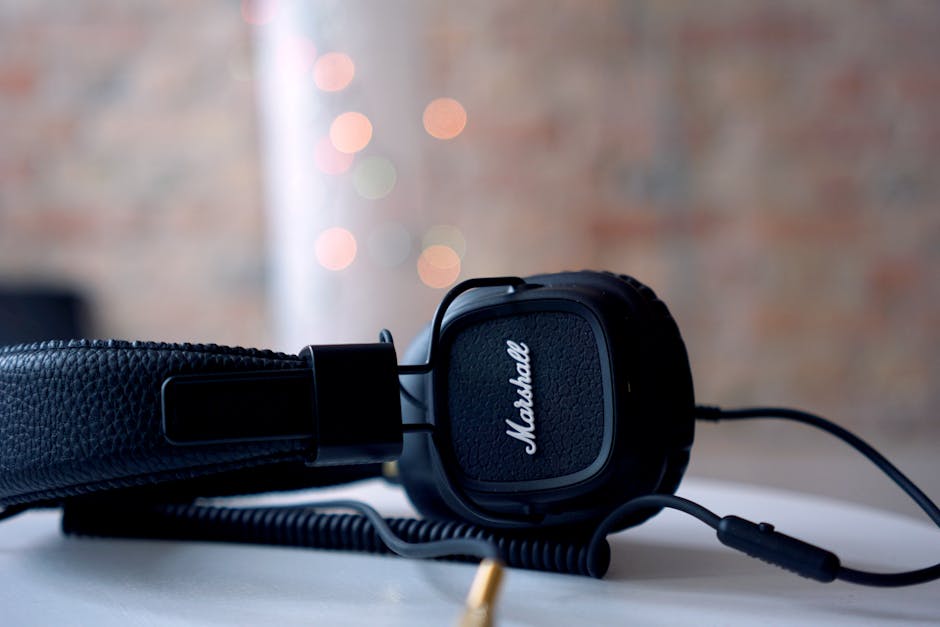Amplify Your Business Presence: The Power of Unique Audio Branding
In today's highly competitive landscape, small businesses are continually seeking innovative ways to differentiate themselves and captivate their target customers. One often-overlooked aspect of branding that can significantly elevate your business’s presence is audio branding. This form of branding uses sound to create an emotional connection with consumers, making your brand more memorable and engaging. From jingle creation to ambient soundscapes, innovation through sound can be a game changer for small business growth strategies. Let’s explore how unique audio branding can amplify your small business presence and share practical insights to implement it effectively.
Understanding Audio Branding: Why It Matters

Audio branding is the strategic use of sound to communicate brand values and enhance consumer experience. Just as a logo serves as a visual representation of your brand, sounds can evoke emotions and create associations in the minds of your audience. Research indicates that audio branding can increase brand recall by up to 70%, providing a compelling argument for integrating sound into your business strategy.
The essence of audio branding lies in sensory storytelling. It’s about crafting a unique auditory experience that resonates with your audience. For instance, think about the upbeat music at a coffee shop that makes you feel welcome or the iconic sound of a fast-food restaurant that immediately conjures images of your favorite meal. These subtle cues are not merely background noise; they actively shape customer perception and loyalty.
Elements of Effective Audio Branding

To successfully implement audio branding, it's crucial to consider several key elements. The first is consistency. Just as visual branding requires a cohesive color palette and logos, your audio branding should maintain a consistent tone and style. This could involve using the same music themes across ads, social media, and in-store experiences.
Secondly, think about the emotional impact. Different types of sounds elicit varied emotions, which can influence behavior and perception. For instance, upbeat tempos might encourage engagement and excitement, while softer melodies may create calmness. How do you want your customers to feel when they interact with your brand? Crafting audio that reflects this feeling is essential.
Lastly, think about your audience. Tailor your audio branding to resonate with the demographics of your target customers. Different audiences respond to different sounds. For example, a tech-savvy audience might appreciate modern, electronic beats, while a more traditional clientele might connect better with classical undertones.
Real-World Examples of Audio Branding Success

Examples of effective audio branding can be found across diverse industries. Companies like McDonald’s and Intel have successfully created audio logos, recognizable sounds that accompany their brand messages, leaving a lasting imprint in the minds of consumers. McDonald's “I’m Lovin’ It” jingle is a prime example; it’s catchy and evokes feelings of happiness and satisfaction.
A lesser-known success story comes from a local bakery that integrated audio branding by playing a curated playlist of cozy, warm tunes in their shop. This not only created an inviting environment but also encouraged more prolonged visits, ultimately boosting sales. The soothing sounds made customers feel at home, contributing to increased foot traffic and repeat business.
The Implementation: Steps to Create Your Audio Brand

-
Define Your Brand Personality: Begin by identifying your brand’s core values and messaging. This foundational understanding will help shape the sound identity you aim to create. Are you fun and quirky, or more serious and professional? This will influence your sound choices.
-
Choose Your Sounds Wisely: Decide on the type of audio elements you want to incorporate. This could range from jingles to soundtracks to ambient noise. If you're unsure where to start, consider using licensed music services to find tracks that align closely with your brand's personality.
-
Create an Audio Logo: Much like a visual logo, having a short, distinctive audio cue can make your brand more memorable. It should be simple yet unique, allowing customers to recognize your brand instantly upon hearing it.
-
Test and Iterate: Just like with any marketing strategy, testing your audio branding is vital. Conduct focus groups or A/B testing to see how different sounds affect consumer behavior. Pay attention to engagement and retention rates following audio implementation.
-
Spread the Word: Integrate your audio branding across all touchpoints—website, mobile apps, social media, and in-store environments. Consistency will reinforce brand recognition and create a unified customer experience.
Leveraging Cutting-Edge Technologies

In an age dominated by technology, utilizing cutting-edge resources can elevate your audio branding strategies. For instance, businesses can now use algorithms to generate tailored audio experiences based on consumer behavior patterns. This approach combines data and creativity, offering a personal touch to audio interactions.
Additionally, consider exploring areas such as augmented reality (AR) and virtual reality (VR), which are increasingly being used in marketing strategies. Creating immersive experiences through sound can further deepen the emotional connections with your customers. For example, a retail store could integrate AR features that use soundscapes to enhance in-store experiences, providing a new layer of engagement that traditional marketing methods could never achieve.
Soundscapes: Using Ambiance to Create Atmospheres

Beyond jingles and branding, soundscapes—deliberate arrangements of ambient sounds—can significantly enhance the consumer experience. Research has shown that the right background sounds can influence everything from mood to purchase decisions. For instance, a clothing store playing soft instrumental jazz may create a relaxed shopping environment that encourages customers to linger longer.
Consider a spa that uses gentle flowing water or nature sounds to provide a calming backdrop for its services. Not only does this enhance the overall customer experience, but it also reinforces the brand’s position as a provider of relaxation and rejuvenation.
For those interested in maximizing customer engagement, harnessing the power of sensory branding is a valuable consideration. Combining audio with visuals, scents, and tactile experiences creates a multi-sensory encounter that customers are unlikely to forget.
Challenges and Considerations
While audio branding can be a potent tool, it’s essential to be aware of the challenges involved. Licensing music for commercial use can become expensive and complex. Furthermore, consumers’ preferences may change, requiring continual updates to your audio branding strategy.
Additionally, be cautious of overwhelming customers with excessive noise. It can detract from the shopping experience rather than enhancing it. Balancing your audio presence is crucial; sometimes, less is more.
Engagement through Emotional Resonance

Emotional connections lie at the heart of consumer loyalty, and audio branding can play an instrumental role in cultivating these emotions. Capturing your audience’s feelings and translating them into sound can provoke nostalgia, happiness, or even excitement, directing them to engage with your brand.
Techniques like melodic storytelling, where narratives unfold through audio, can captivate your audience. Engaging them through an emotional journey can create memorable experiences and build lasting relationships with your brand.
For instance, think of incorporating storytelling audio ads that recount customer experiences or create scenarios consumers might relate to. This approach not only builds brand identity but also fosters a community around shared stories and emotions.
Community Impact: Tapping into Local Culture

Every community has its unique sounds—local musicians, regional folk music, or traditional beats—that can be integrated into your audio branding. By doing this, you authenticate your brand, moving beyond a generic sound palette toward one that highlights cultural identity and local connections.
A small coffee shop might infuse its atmosphere with sounds reflective of local musicians, inviting customers to feel part of a larger community narrative. In doing so, the brand becomes synonymous with local culture, making it more likely that customers choose to return.
Consider guiding your audio branding journey by exploring community narratives to appeal to consumers' local pride. This sense of belonging can become a powerful driver in your branding.
Final Thoughts

Unique audio branding opens doors to innovative ways for small businesses to connect with their customers. By crafting sounds that resonate with your brand’s values and personality, you can create immersive and memorable experiences that elevate your business presence. Continually experiment, test, and adapt your approach based on consumer preferences to strengthen your audio identity.
As you embark on this journey, you may also want to look into multisensory experiences to further enhance customer interactions.
No matter the path you choose, remember that sound is a powerful tool. By harnessing this element of branding, you can set your small business apart in an increasingly crowded market, capturing the hearts and ears of your audience.




